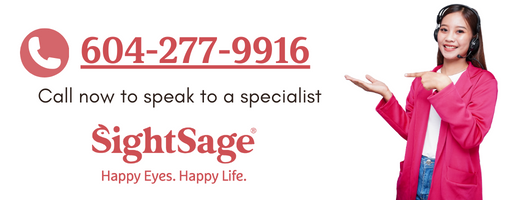How to Know If You Need Glasses: Warning Signs You Need Glasses
Vision changes can be subtle. Blurriness, eyestrain, a light headache—these are easy to ignore. And they may be mild enough for you to disregard them.
In this post, we explain how to tell if you need glasses. We’ll cover the most common symptoms of needing glasses as well as the refractive errors that cause them.
So, how do you know if you need glasses? Paying attention to a few signs can help.
Signs You Need Glasses
Not everyone who needs glasses finds themselves unable to read or see traffic signs. It’s possible to need glasses despite not having any obvious symptoms. With that in mind, here are the most common signs you need to pay attention to:
- Fuzzy and/or hazy vision – objects don’t have clearly defined lines
- Blurry vision that doesn’t go away
- Eyestrain
- Tired or irritated eyes
- Squinting
- Headaches, which occur because of the extra effort your eyes and brain have to make to focus
- Problems seeing at night
- Double vision
- Distorted vision
- Other vision changes
Good to know: Dry eyes disease and other eye conditions may also cause blurriness, eyestrain, irritated eyes, and other symptoms similar those above.
Take the Dry Eye Test to find out whether your symptoms could be the result of dry eyes disease. Our question-based online test is quick and easy.
Common Vision Problems That Require Glasses
Most people need glasses because they develop a refractive error. The most common vision problem, refractive errors occur when the cornea at the front of the eye, or the eye itself, ages or changes in shape.
As a result, the eye no longer focuses the light on the retina at the back of the eye. This can cause blurriness and other symptoms.
Let's take a closer look at the most common refractive errors.
Hyperopia (Farsightedness)
An abnormally shaped cornea or lens, or a short eyeball, will make objects close by appear blurry. By contrast, distant objects will look clearer. This occurs because your eyes are not focusing light on the retina but behind it.

According to the US National Eye Institute, most people with hyperopia are born with this condition. However, it may not become noticeable until you get older.
Myopia (Nearsightedness)
For a person with myopia, distant objects appear blurry while close objects remain clear. Myopia can make it difficult to drive safely or follow film subtitles.
It occurs because of a cornea that is too curved or an eyeball that is too elongated. The condition usually appears in childhood. Similar to farsightedness, it also tends to run in families.
Astigmatism
Astigmatism occurs when the lens or cornea of the eye has a different shape than normal. Objects near and far may appear blurry, and you may also have headaches and squint. Mild astigmatism may not cause any symptoms.
Some people are born with the condition. Others develop it later in life after eye surgery, injury, or because of disease. It often occurs alongside myopia or hyperopia.
Presbyopia
Having presbyopia makes it difficult to read or see things up close. The condition occurs as the lens in the eye loses its flexibility with age. It then no longer focuses light correctly on the retina.

Presbyopia is a natural process of aging. Most people develop it after 45, though in some the symptoms may take longer to show and be milder.
Getting Your Eyes Checked
Symptoms resulting from refractive errors are easy to ignore. But if you experience any of the signs you need glasses, it’s good to see an eye doctor for a checkup.
A complete eye checkup carried out by an ophthalmologist can rule out eye diseases that may cause blurriness and other vision changes. For example, dry eyes, cataracts, or glaucoma. Seeing an optometrist can help correct refractive errors.
Not wearing glasses won’t worsen your eyesight. But it makes your eyes work harder to focus, so you may experience eye strain and headaches often
Even if the blurriness and other symptoms don’t interfere with your daily life, glasses can sharpen your vision. They can make the world look in high definition.
Glasses have other benefits, too. For example, if your eyes feel tired and irritated after a day spent in front of a computer in an air-conditioned room, glasses can prevent air from blowing directly into your eyes. They can also help slow tear evaporation, which can lead to dry eyes disease.
What’s more, glasses can make you more aware of your vision and the importance of supporting it. Becoming an eyeglass wearer may motivate you to eat a diet that is healthy for your eyes, take an eye health supplement, and get your eyes tested at least every two years.

Time to Schedule an Eye Exam?
Eye exams are quick and easy. During one, an eye doctor or assistant will test your visual acuity using a chart. They will also use retinoscopy or a computerized refractor to see if light rays focus properly on the back of your retina.
Your visual field, eye muscles, internal eye pressure, and retina may also be evaluated. All these procedures are painless.
Whether you’ve had an eye exam in the last two years, scheduling one is a good way to look after your eyes.
After all, your eyes work hard every day, so they deserve a bit of care now and then, don’t they?
